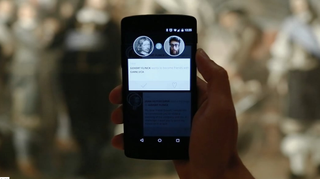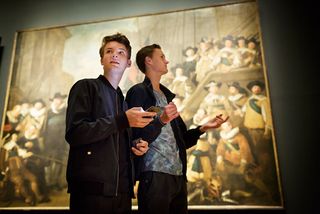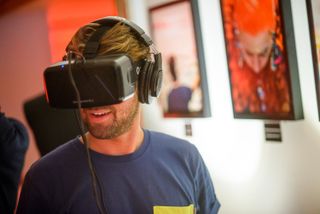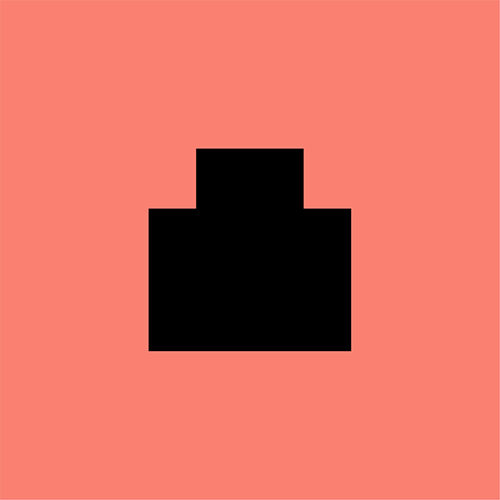9 trends that will change the design landscape
With new brand touchpoints, technologies and user behaviour, it's never been more important to engage your audience. Here's how...
Imagine getting a friend request from 17th century Dutch painter Rembrandt van Rijn while wandering through a museum exhibition. Or gossiping with painted characters about Baroque master Govert Flinck, who rose through society by marrying the daughter of a rich and powerful man.
That's precisely the situation visitors to the Netherland's Hermitage Amsterdam museum found themselves in last year, thanks to new storytelling app #GoldenAge created by international creative agency Lava and its innovation team Lava Lab.

Speaking at three-day design and creativity conference Design Indaba, Lava Lab's Klasien van de Zandschulp and Cecilia Martin explained that they worked closely with the curator of the museum, art historians and the target audience, millennials (born between 1980-2000), to identify how to use technology and behavioural habits in a new way to connect visitors to the exhibition.

"By using iBeacons – bluetooth transmitters – in the museum, we were able to send updates to the users' smartphones, and create a really smooth and intuitive experience," explained Lava Lab's Klasien van de Zandschulp, who helped develop the first virtual festival in the world, Zo niet, using a similar concept. "These updates were sent from the characters of the paintings themselves."
"We try to find innovative and powerful ways to tell stories of brands, exhibitions, spaces, events and so on in a away that resonates to young audiences," added Cecilia Martin, who, van de Zandschulp, specialises in creating unexpected social encounters. "By connecting with them we connect with the future."
Future design trends
During their talk at Design Indaba, the pair – who also showed how AR can be used on farms to help milk cows ("Cows are early adopters!") – explained that innovators see the future in the present.
We caught up with van de Zandschulp and Martin in South Africa after their talk to find out which trends they believe will most shape the design landscape in the next five-ten years, and why they're so important…
01. Augmented reality

"I think in the coming years, the development of augmented reality glasses will go faster than we can imagine," says Klasien van de Zandschulp.
"For the design landscape this is very exiting because it's a new 'space' that has no design rules yet. A website has usability rules and certain expectations from the end user as the virtual and augmented space is still in development."
"We have designed augmented spaces for years now, but they were always limited to a telephone screen. The glasses will become more integrated in our lives. Imagine that you won't look at a phone or computer screen but you wear goggles and visit a virtual space, using your body to navigate in stead of mouse clicks and a keyboard. Compare this to the time we first designed the web. Exiting times ahead!"
02. Open source attitudes
We'll need to give up control, predicts Cecilia Martin. "Millennials want to be in control; they like to discover things on their own. They like to test and mess with things that aren't finished to create something new."
"We need to design tools, not end products. Opensource your brand identities. It's not about repetition and recognition of a certain pattern: it's about enabling an attitude. Design starting points that will allow people to invent things themselves."
03. Flexible graphic design

"Another trend I see coming," says van de Zandschulp, "is the evolution of font and graphic design. Design is more and more dynamic and flexible to (interactive) spaces and events."
"How will a font behave, when we can visit it in 2D, 3D, virtual reality, or even when we step into it? Graphic design is becoming more interactive and flexible, it develops itself parallel to the evolution and maturation of a brand."
04. Immediate mediation
To stay relevant, designers need to create "very efficient" experiences. "It isn't technology for technology," says Cecilia Martin.
"Younger generations are looking for ideas that make their life better, solve small problems, meet a specific need. We need to make efficient user experiences to help them accomplish their tasks now! It's all about immediate mediation."
05. User testing is crucial
User testing is essential when it comes to successfully creating unexpected experience, says van de Zandschulp: "It's important to experience the relationship with technology yourself and observe others. That way you can create your own vision in user experience design for new technology."
"We highly value the importance of user testing and research. It takes time, but it's so important and valuable to test your design with your target audience: it's a return investment."
06.Taking risks
'Always look ahead and don't be afraid to fail," adds van de Zandschulp. "If you're afraid of failing, you can't truly innovate."
07. Collaboration

"These unexpected experiences are always created with partners," says van de Zandschulp. "For our project iPerform – by WhyNot, HearUsHere – we 'hacked' the Friday Night event of Van Gogh museum."
"The two founders of Why Not are experts in performance design. Brainstorming together we came up with an interesting concept to disrupt a Friday Night at Van Gogh museum. Based on Van Gogh's work we created an app with fun animations asking you to move or behave in a specific way."
"This resulted in unexpected performances in the museum space, a space where you usually have to behave, acted by the millennials themselves. At one point we all lay down on the floor!"
08. Unexpected experiences
"Millennials are looking for experiences over anything else," says Martin. "They want to be social and take part in an interactive way. They are willing to connect with each other and look at technology as mediator. They also want to feed with the visual material their virtual world."
"To create unexpected experiences, we first start thinking of the kind of reaction we want to provoke and then we find the technology that best enables it."
"For example if what we want is to enable to make a collective creative act or an act of disruption or how we can orchestrate it disobedience so they can experience the limits of behaviour in space."
09. New age of storytelling
"The internet of things is a current hype: we connect each thing to the internet and use sensors to interpretative them. #GoldenAge is about connecting art works to the internet, give them a 'voice'," explains van de Zandschulp.
"We developed the #GoldenAge concept further as an open source platform called 'Flinck', which enables each museum to connect art works to the internet. The collection can carry bluetooth or RFID trackers in the physical space, that you can easy connect through the CMS (content management system) of Flinck. This way each art work can become connected to the internet."
"But in the end it's all about the stories and the way you tell them. We offer the CMS as an open source system, but encourage museums to think about new ways of storytelling instead of just showing the regular dry texts and images with an art work."
Lava Lab's Klasien van de Zandschulp and Cecilia Martin spoke at Design Indaba 2016, a three-day design and creativity conference held annually in Cape Town.
Liked this? Read these...
- Top examples of experimental design
- Read our selection of the finest free ebooks for designers
- See some stunning examples of kinetic typography
- Top Chrome extensions for designers and devs
- Discover the best user testing software

Thank you for reading 5 articles this month* Join now for unlimited access
Enjoy your first month for just £1 / $1 / €1
*Read 5 free articles per month without a subscription

Join now for unlimited access
Try first month for just £1 / $1 / €1
Get the Creative Bloq Newsletter
Daily design news, reviews, how-tos and more, as picked by the editors.

Julia is editor-in-chief, retail at Future Ltd, where she works in e-commerce across a number of consumer lifestyle brands. A former editor of design website Creative Bloq, she’s also worked on a variety of print titles, and was part of the team that launched consumer tech website TechRadar. She's been writing about art, design and technology for over 15 years.